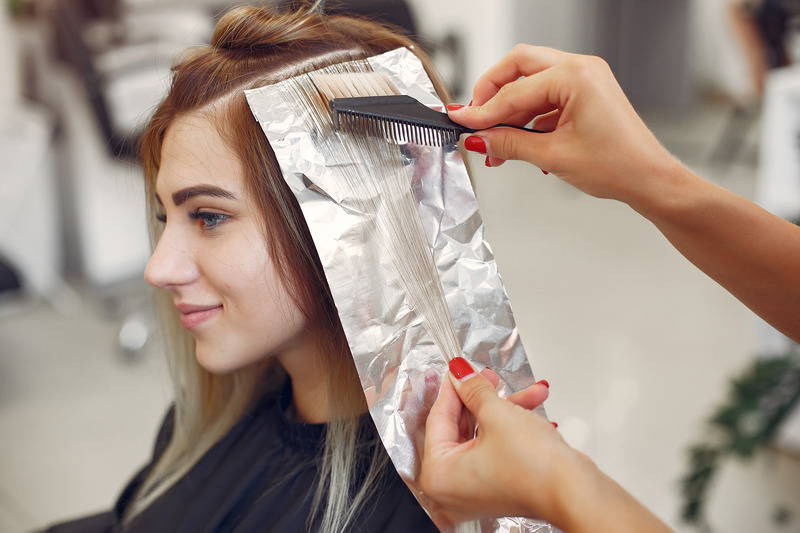
Hair dye has become integral to personal grooming and fashion worldwide. Its ability to transform appearances and boost confidence makes it a popular choice for those looking to change their hair color.
However, concerns regarding its safety and potential side effects have surfaced with its growing usage. A common question is: Can regular hair dye use lead to hair loss?
This blog post delves into this concern, exploring the composition of hair dye, its effects on hair and scalp health, and the connection between hair dyeing and hair loss.
Understanding Hair Dye
Hair dye is a chemical product designed to change the color of hair. Its fundamental mechanism involves the penetration of the hair shaft and the alteration of the hair’s natural pigment.
The precise process of how hair dye achieves this transformation can vary depending on the specific type of dye being used.
Types of Hair Dyes
Hair dyes can be categorized into three primary types, each distinguished by its characteristics and duration of color retention:
- Permanent Dyes: Permanent hair dyes bring about long-lasting color changes and typically involve a chemical process that results in a more enduring transformation of hair color.
- Semi-Permanent Dyes: Semi-permanent hair dyes offer a temporary color change that gradually washes out over several shampoos. They are a less permanent option compared to permanent dyes.
- Temporary Dyes: Temporary hair dyes are known for their non-committal nature. They do not deeply penetrate the hair shaft but instead coat the surface. As a result, temporary dyes are easily washed out with a few shampoos, making them an ideal choice for those seeking short-term color variations or experimenting with different looks.
Chemical Composition of Hair Dye

Hair dye typically contains a combination of chemicals that work together to change the color of the hair. The specific chemical composition can vary depending on the type and brand of hair dye, but some common chemicals found in hair dye products include:
Ammonia
Ammonia is often used in permanent hair dyes. It helps to open the hair cuticle, allowing the dye to penetrate the hair shaft and deposit color. While effective in achieving long-lasting results, ammonia can be harsh on the hair and may lead to damage over time.
Hydrogen Peroxide
Hydrogen peroxide is another common ingredient in permanent hair dyes. It acts as a developer, helping to activate the color molecules and create a chemical reaction that changes hair color. However, hydrogen peroxide can strip natural oils and proteins away from the hair, leaving it dry and brittle.
P-Phenylenediamine (PPD)
PPD is a critical component in many hair dyes, significantly darker shades. It is responsible for the lasting color effects of the dye. However, PPD is also a common allergen and can cause allergic reactions in some individuals. These reactions can manifest as scalp irritation, redness, itching, and, in severe cases, swelling.
Resorcinol
Resorcinol is another chemical often found in hair dyes, particularly those designed for permanent color. It assists in the development of color and can create more vibrant shades. However, like PPD, it can also be an allergen for some people.
Fragrance and Preservatives
Hair dyes may also contain fragrances to mask the chemical odor and preservatives to extend their shelf life.
Conditioning Agents
Some hair may include conditioning agents to help improve the texture and manageability of the hair after coloring. These agents can counteract the drying effects of other chemicals in the dye.
These chemicals are crucial for effective color deposition and ensuring the longevity of the hair dye. The substances commonly found in hair dyes, such as ammonia, hydrogen peroxide, and PPD, can adversely affect hair and scalp health.
Hair Dye and Hair Loss: The Connection
The relationship between hair dye usage and hair loss has been extensively studied, revealing a potential connection between regular hair dye use and increased hair loss. Some studies have identified specific chemicals commonly found in hair dyes, including ammonia, hydrogen peroxide, and PPD, known to weaken the hair structure over time, making it more prone to breakage and thinning.
Additionally, research suggests that the cumulative impact of these chemicals can exacerbate hair loss, particularly with frequent and long-term use of hair dye products. The mechanisms by which hair dye may contribute to hair thinning and loss are multifaceted.
Firstly, many hair dyes work by penetrating the hair shaft to deposit color, which can compromise the integrity of the hair shaft, leading to increased fragility and breakage. Repeated use often worsens this damage, stripping the hair of its natural strength and resilience.
Secondly, the chemical components in hair dyes can irritate the scalp, ranging from mild to severe, disrupting the normal hair growth cycle. Scalp inflammation caused by these chemicals can result in chemical dermatitis, causing discomfort and interfering with the health and growth of new hair follicles.
Finally, in some individuals, allergic reactions to hair dye ingredients can contribute to hair loss, leading to intense itching and scratching, physical damage to the scalp and hair follicles, further hair thinning, and loss. These potential effects highlight the importance of considering the impact of hair dye on hair strands, especially in the context of dark hair and permanent hair color.
Hair shedding and breakage should be carefully monitored, particularly during the hair coloring process, to minimize hair breakage and maintain the health of color-treated hair.
Safe Practices in Hair Dyeing
It’s crucial to conduct patch tests to detect any allergic reactions to minimize the risks associated with hair dyeing, follow the product’s instructions meticulously, and limit the frequency of dyeing. These steps help reduce potential skin irritations and prevent cumulative hair and scalp damage caused by frequent chemical exposure.
Natural alternatives like henna and other plant-based dyes offer safer options for those concerned about chemical dyes. Henna is mainly known for its strengthening properties and is less invasive than chemical dyes, as it coats rather than penetrates the hair shaft.
However, it’s essential to consider that natural dyes offer limited color choices and may not last as long as chemical dyes.
How often should you use hair dye?

While hair dye itself is not a direct cause of hair loss, its frequent use can lead to damage and breakage, which may eventually contribute to hair loss. It’s advisable to wait at least four to six weeks between dyeing sessions to allow your hair to recover from the chemical exposure and maintain healthy hair.
Opt for high-quality hair dyes that are gentle on your hair and scalp, avoiding products with harsh chemicals like ammonia and parabens to prevent irritation and damage. If you have concerns about hair loss, it’s wise to consult a professional stylist or dermatologist before dyeing your hair.
Remember, moderation is vital to enjoying a beautiful new hair color while safeguarding the health of your hair.
When to Consult a Professional
If you notice signs of excessive hair loss, persistent scalp irritation, or any other concerning symptoms following the use of hair dye, it’s crucial to seek guidance from a dermatologist or trichologist. These professionals specialize in diagnosing and treating hair and scalp conditions, including hair dye-related ones.
Consulting a professional offers access to various treatments and remedies to address dye-related hair issues. These may include medicated shampoos formulated to soothe irritated scalps, promote hair regrowth, and maintain overall hair and scalp health.
Sometimes, these experts can recommend prescribed medications or topical treatments to address underlying causes and stimulate hair regrowth. Seeking professional advice ensures that you receive tailored solutions for your specific hair and scalp needs, improving the chances of successful treatment and recovery.
Bottom Line
In summary, while hair dye can offer a desirable change in appearance, its impact on hair health should not be overlooked. Regular use of hair dye, especially those with harsh chemicals, can lead to hair thinning and loss.
Practicing safe hair dyeing techniques and being aware of the signs necessitating professional consultation is essential. For those experiencing hair issues related to dye use, exploring products like Vitamins Revive for Hair Treatment can be a beneficial step in your hair care regimen.
Remember, it’s always better to be cautious and seek professional advice when needed regarding hair health.
FAQs
Can hair dye make your hair fall out?
Hair dye can cause hair damage and, in some cases, lead to hair loss due to the chemicals in some dyes weakening the hair shaft, making it prone to breakage. Individuals with sensitive scalps may also experience allergic reactions that result in hair loss.
Will hair grow back after hair dye damage?
In many cases, hair can regrow after dye-related damage. The extent and timeline of regrowth depend on factors like damage severity and individual hair health.
Adequate care, hydration, and a balanced diet can support hair regrowth.
Does hair dye damage your hair?
Yes, hair dye can damage your hair. Chemicals in some dyes, such as ammonia and peroxide, can weaken the hair shaft and strip away natural oils, leading to dryness and brittleness.










